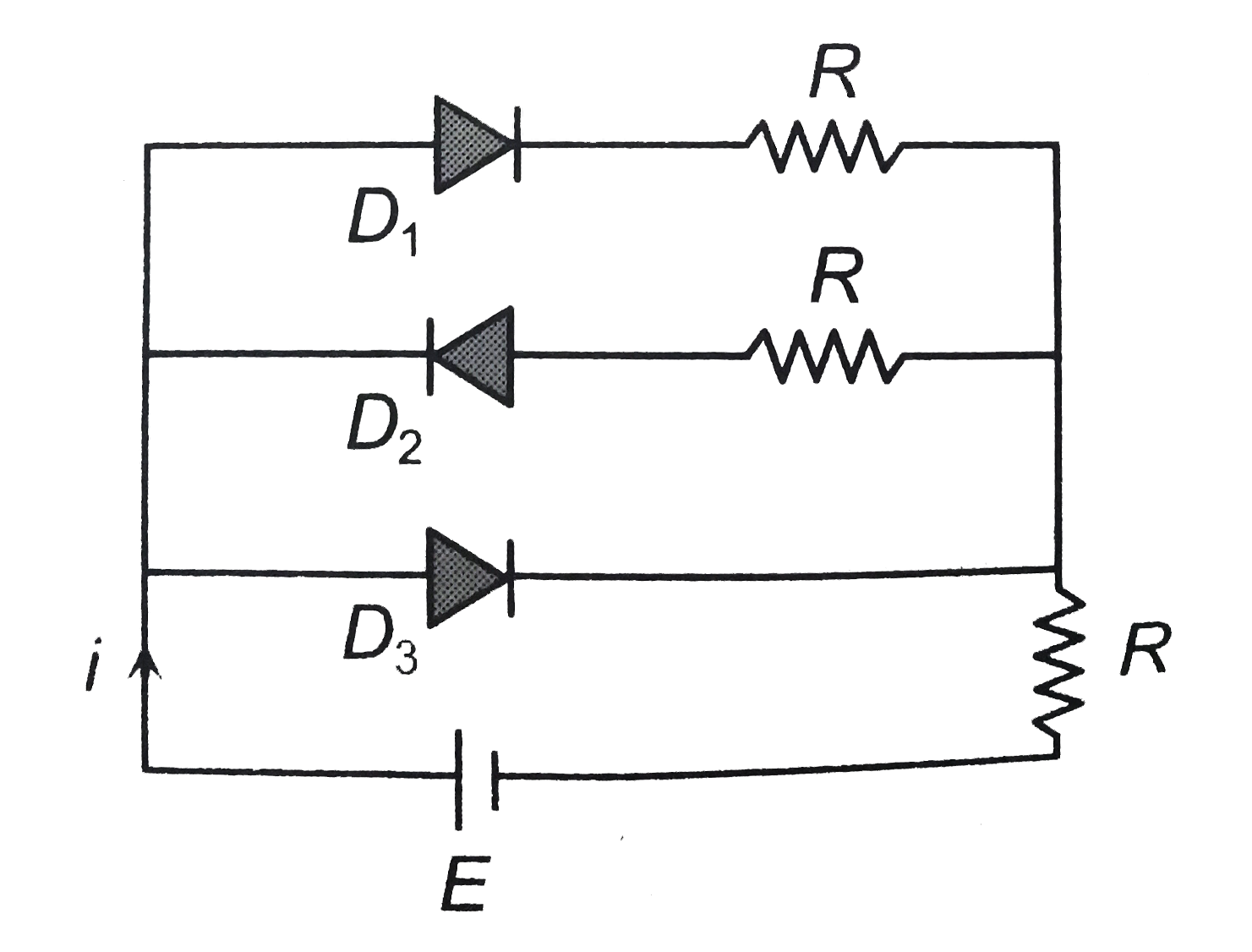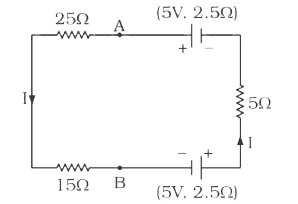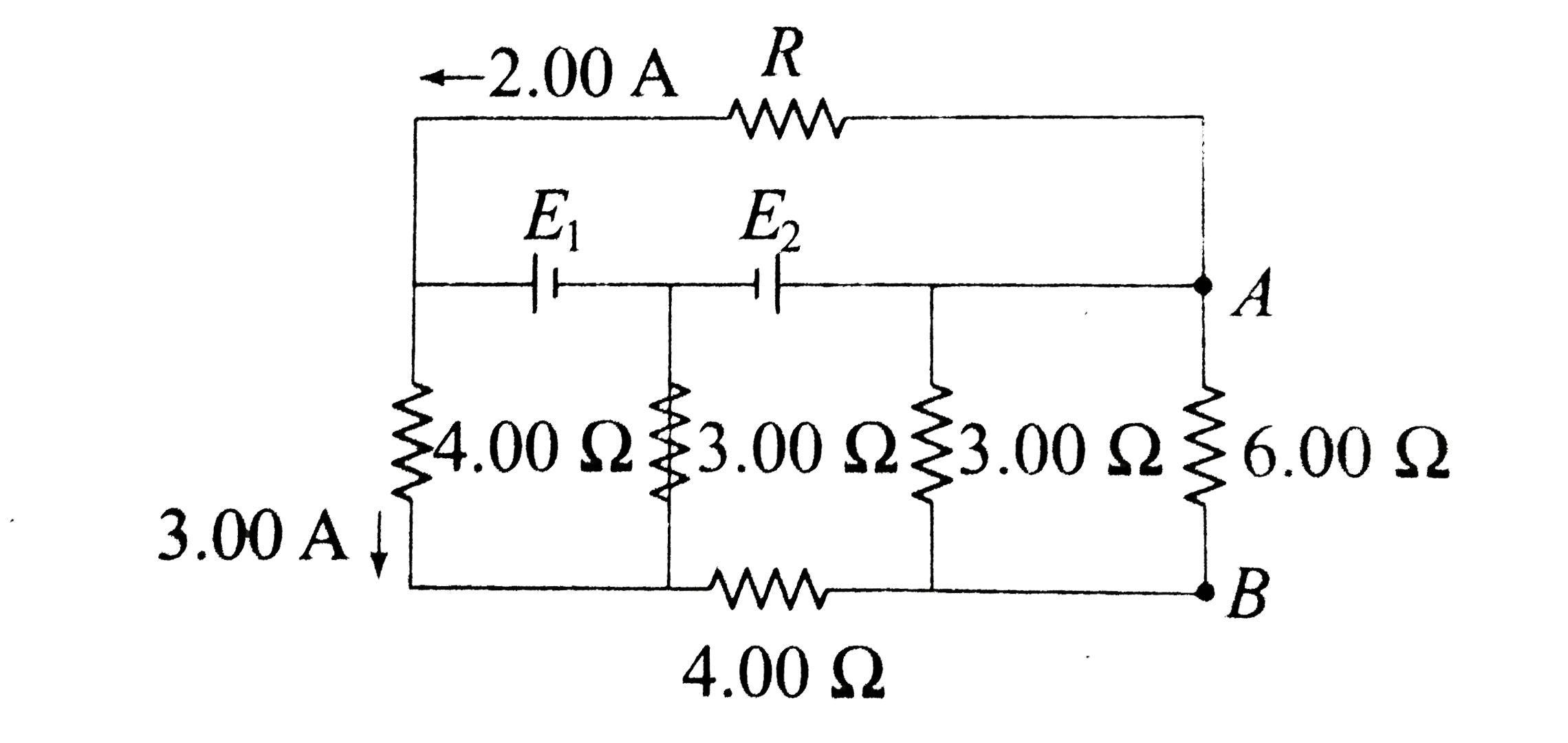In the following circuits, PN - junction diodes D1,D2andD3 are ideal for the following potential of A and B, the correct increasing order of resistance between A and B will be

(i) −10V,−5V
(ii) −5V,−10V
(iii) −4V,−12V
(i)<(ii)<(iii)
(iii)<(ii)<(i)
(ii)=(iii)<(i)
(i)=(iii)<(ii)
The correct Answer is:C
Step by step video & image solution for In the following circuits, PN - junction diodes D_(1),D_(2) and D_(3) are ideal for the following potential of A and B, the correct increasing order of resistance between A and B will be (i) -10V, -5V (ii) -5V, -10V (iii) -4V, -12V by Physics experts to help you in doubts & scoring excellent marks in Class 12 exams.
Updated on:21/07/2023Similar Questions
In the following circuit of PN junction diodes D1,D2 and D3 are ideal then i is

View Solution
If VA and VB denote the potentials of A and B, then the equivalent resistance between A and B in the adjoint electric circuit is
View SolutionThe following figure shows a part of a circuit,the potential difference between C and B(VC−VB) is

View SolutionPotential difference between points A and B (i.e. VA−VB) is -----

View SolutionIn the circuit shown, the potential difference between A and B VAandVB is equal to_______V.

View SolutionIn the circuit shown, the potential differences, V1 ( between A and B ) and V2 ( between C and D ), are

View SolutionIn the circuit shown in figure, E1andE2 are two ideal sources of unknown emfs. Some currents are shown. Potential difference appearing across 6Ω resistance is VA−VB=10V.

View SolutionTwo condensers C1 and C2 in a circuit are jhioned as shown in . The potential fo point A is V1 and that of B is V2 . The potential of point D will be

View SolutionIn the given circuit find the |VA−VB| where VA,VB are electric potentials at the points A and B.

View SolutionThe electric potential at a point, due to a positive charge of 100 µC distance of 9m, is (a) 10^4 V (b) 10^6 V (c) 10^5 V (d) 10^7 V
View Solution
